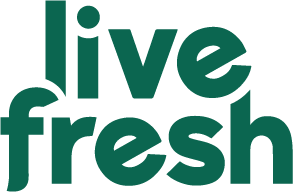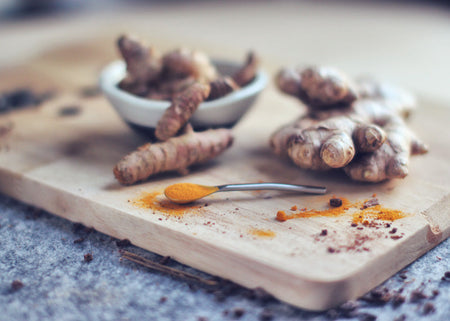Heute möchte wir ein Thema betrachten, das möglicherweise auch für Dich von großer Bedeutung ist: die histaminarme Ernährung. Hast Du in letzter Zeit oft mit unangenehmen Beschwerden wie Kopfschmerzen, Hautausschlägen, Verdauungsproblemen oder allergieähnlichen Reaktionen zu kämpfen? Es könnte sein, dass eine Histaminintoleranz der Grund dafür ist. Doch viele wissen gar nicht, was hinter ihren Beschwerden steckt.
Histamin ist eine Substanz, die natürlicherweise in unserem Körper vorkommt und bei verschiedenen wichtigen Prozessen eine Rolle spielt. Allerdings kann ein übermäßiger Histamingehalt zu diesen unangenehmen Beschwerden führen. Die gute Nachricht ist, dass eine histaminarme Ernährung helfen kann, diese Symptome zu lindern und Dein Wohlbefinden zu steigern.
Gemeinsam möchten wir uns in diesem Beitrag mit den Grundlagen hierzu befassen. Wir werden herausfinden, welche Lebensmittel einen hohen Histamingehalt haben und welche Du daher besser meiden solltest. Gleichzeitig werden wir uns auf Alternativen konzentrieren, um Deinen Speiseplan weiterhin abwechslungsreich und genussvoll zu gestalten.
Um den Alltag mit einer histaminarmen Ernährung zu erleichtern, werden wir auch praktische Tipps und Ratschläge besprechen. Denn es ist wichtig, dass Du in der Lage bist, Deine Ernährung entsprechend anzupassen, ohne dabei auf Genuss und Vielfalt verzichten zu müssen.
Jetzt lass uns gemeinsam in die Welt der histaminarmen Ernährung eintauchen und Wege entdecken, wie wir durch bewusste Lebensmittelauswahl und -zubereitung unsere Gesundheit und unser Wohlbefinden verbessern können.
Definition and function of histamine in the body
Histamine is a naturally occurring chemical compound in the body that acts as a neurotransmitter and tissue hormone. It is produced and released by special cells, particularly mast cells. Histamine fulfills various functions in the body, including
- Inflammatory response: Histamine plays an important role in regulating inflammatory responses in the body. It helps attract white blood cells to the site of injury or infection and promotes the permeability of blood vessels to help the immune system fight pathogens.
- Stomach acid production: Histamine is also involved in the regulation of stomach acid production. It stimulates the parietal cells of the stomach, which produce hydrochloric acid to help digest food.
- Neurotransmission: In the brain, histamine acts as a neurotransmitter that regulates communication between nerve cells. It plays a role in controlling sleep-wake cycles, appetite, emotional regulation and other neurological processes.
Symptoms of histamine intolerance
In people with histamine intolerance can Histamine cannot be broken down sufficiently or it is too much histamine is releasedwhich leads to an excess of histamine in the body. The symptoms of histamine intolerance can be diverse and vary from person to person, but may include the following:
- Headaches and migraines
- Skin reactions such as redness, itching, hives or eczema
- Digestive complaints such as abdominal pain, flatulence, diarrhea or constipation
- Respiratory symptoms such as runny nose, sneezing, asthma or shortness of breath
- Cardiovascular symptoms such as low blood pressure, accelerated heartbeat or dizziness
- General malaise, tiredness or exhaustion
The symptoms can occur promptly or with a delay, which can make it difficult to identify the triggers.
Causes of increased histamine exposure
The causes of increased histamine exposure or histamine intolerance can be varied. Some possible factors are
- Enzyme deficiency: Histamine is normally broken down by the enzyme diaminooxidase (DAO). A lack of DAO can lead to inadequate histamine processing.
- Histamine release: Certain situations or conditions can lead to an increased release of histamine from mast cells, such as allergic reactions, inflammation or stress.
- Histamine-rich foods: Eating histamine-rich foods can increase histamine exposure. These include, for example, matured cheeses
Foods that are not so suitable for histamine intolerance
Histamine-rich foods can cause an increased release of histamine in the body or inadequate histamine processing in people with histamine intolerance.
Above all alcohol can increase the release of histamine and intensify the symptoms of histamine intolerance. It can also fermented foods can also promote increased histamine formation, as histamine can be produced during the fermentation process. Also through ripening or long storage foods can also lose their histamine-degrading enzymes and thus lead to a higher histamine load. This increases the list of foods that should be avoided in the case of histamine intolerance:
- Fermented dairy products such as yogurt, kefir or buttermilk
- Matured cheeses such as Parmesan, Gouda, Cheddar or Camembert
- Smoked or cured foods such as smoked fish, ham or sausages
- Fermented foods such as sauerkraut, kimchi or fermented soy products (e.g. tempeh)
- Alcoholic drinks, especially red wine, beer and sparkling wine
- Canned fish or fermented fish such as canned tuna or anchovies
- Yeast and yeast-containing products such as yeast bread, yeast cake or brewer's yeast
- Tomatoes and ketchup
- Citrus fruits such as oranges, lemons or grapefruits
- Chocolate and cocoa
- Nuts and seeds, especially peanuts and walnuts
- Pickled foods such as pickles, pickled vegetables or olives
- Foods with artificial preservatives or colorants
- Caffeinated drinks such as coffee, black tea or energy drinks
- Spices such as cinnamon, paprika, chili or curry
- Ready-made sauces and dressings, especially soy sauce, Worcestershire sauce or tomato sauces
It is important to consider individual tolerances and reactions to histamine-rich foods as they can vary from person to person. Everyone should identify their personal triggers and react accordingly.
The following are suitable for an easy introduction to a change in diet juice cures from LiveFresh. For a healthy diet you will find many tasty and healthy recipes and more information.
Processing and storing food to reduce histamine
The way food is processed and stored can affect histamine levels. Here are some tips to reduce histamine formation or histamine release:
- Favor fresh foods: Use fresh foods whenever possible and avoid long-stored or ripened products.
- Quick preparation: Avoid long cooking times, as these can contribute to histamine formation. Fresh preparation and short cooking times are ideal.
- Freezing: If you want to store histamine-rich foods such as fish or meat, freeze them as soon as possible after purchase to reduce the histamine content.
- Store at a low temperature: Always keep refrigerated foods at low temperatures to avoid increased histamine formation.
- Avoid fermentation: Avoid fermented foods or reduce their consumption as they are often high in histamine.
Foods that are recommended in a low histamine diet
If you have a histamine intolerance, foods with a low histamine content should be preferred. Here is a list of foods that you can safely include in your diet:
- Fresh meatBeef, chicken, turkey, lamb
- Fresh fish: Cod, pollack, trout, halibut
- Fresh seafood: Prawns, mussels, crabs
- Eggs
- Fresh fruit: Apples, pears, berries, melons
- Fresh vegetables: Broccoli, carrots, spinach, peppers
- Legumes: Lentils, chickpeas, beans
- Dairy products without fermentationFresh milk
- Cereal products: Rice, oatmeal, quinoa, buckwheat
- Herbs and spices: Basil, coriander, dill, parsley
There are also foods that support the breakdown of histamine in the body. Here are some examples:
- Vitamin C-rich foods: Oranges, lemons, peppers, broccoli
- Foods rich in quercetin: Onions, apples, berries, kale
- Foods rich in copper: Nuts, seeds, wholegrain products, pulses
- Foods rich in vitamin B6: Chicken, fish, potatoes, bananas
- DAO-rich foods: Bromelain-containing foods such as pineapple or papaya
These foods can help to support the breakdown of histamine and alleviate possible symptoms. However, it is important to note that their effect can be individual and is not the same for everyone.
Everyday tips for histamine intolerance
Meal planning and preparation
It is advisable to meal plan to keep an overview of your diet. Plan in advancewhich meals you want to prepare during the week. By setting out your meal plan in advance, you can ensure that you have enough low-histamine options available and are not left wondering what to eat unprepared.
It's important, variety in your diet and include different foods with low histamine in your meal plan. This will ensure that you maintain a balanced diet while adding variety to your meals. Look for a variety of fresh foods that you can tolerate and experiment with new recipes and ingredients to enrich the flavor and nutrients in your diet.
Another useful strategy is to Prepare meals in advanceto reduce the stress of preparation. For example, you can cook larger quantities at the weekend and portion them out for the coming days. This allows you to have healthy, low-histamine meals on hand, even if you have little time or energy to cook extensively. It can also be helpful to stockpile food so that you always have ingredients on hand to prepare quick and easy meals.
Shopping tips for low histamine foods
- Create a shopping list: Create a shopping list based on your meal plan to make sure you have all the low histamine foods you need in the house.
- Give preference to fresh foods: Buy fresh foods, especially fruit, vegetables, meat and fish, to keep histamine levels low.
- Shop seasonally: Choose seasonal foods as they are often fresher and richer in nutrients.
- Pay attention to labels: Read the labels of packaged foods carefully to make sure they don't contain additives or ingredients that could be high in histamine.
Preparation of low histamine meals
- Fresh preparation: Prepare your meals fresh to keep the histamine content low.
- Gentle preparation methods: Use gentle preparation methods such as steaming, roasting or grilling to avoid increasing the histamine content.
- Spices and herbs: Use spices and herbs with a low histamine content to improve the taste of your meals.
- Avoid long storage times: Avoid long-term storage of prepared foods, as this can lead to higher histamine formation.
Try out which foods and preparation methods are best for you.
Delicious inspiration for recipes you can also find on our blog and on our Instagram channel.
Tips for avoiding histamine in your diet and dealing with a histamine intolerance
One helpful approach to reducing histamine intolerance symptoms is to eat a food diary to record which foods may be triggering your symptoms. By recording your meals and associated symptoms, you can identify potential triggers and make appropriate adjustments to your diet.
Pay attention to your body's reactions and observe how you respond to certain foods. Everyone is unique and there may be differences in individual histamine tolerance. By paying attention to your body's signals, you can find out which foods are problematic for you and which you can tolerate better.
It is also advisable to do a gradually eliminate histamine-rich foods to find out which ones are problematic for you. Start by eliminating foods with a high histamine content such as matured cheese, fermented products, certain types of fish and alcoholic drinks from your diet. Observe your reactions and watch for any improvement in symptoms.
It is important to note that every person is different to histamine-rich foods. What may trigger symptoms in one person may not have a negative effect on another. Pay attention to your individual tolerances and experiment with different foods to find out which are good for you and which you should avoid.
What is a low histamine diet?
A low histamine diet involves avoiding or reducing foods that are rich in histamine. Histamine is a natural substance that occurs in the body and is also formed in some foods. With histamine intolerance, the body cannot break down histamine sufficiently, which can lead to symptoms such as headaches, skin rashes, digestive problems and breathing difficulties. A low-histamine diet aims to reduce histamine exposure by choosing suitable foods.
Which foods should I avoid on a low histamine diet?
Histamine-rich foods that should be avoided if you have a histamine sensitivity include matured and fermented products such as cheese, yogurt, sauerkraut, soy sauce, smoked fish and some types of meat. Alcohol, especially red wine and beer, and some fruits and vegetables such as citrus fruits, tomatoes and spinach also contain histamine and may need to be limited or avoided.
Which foods are low in histamine?
Low histamine foods include fresh meats such as chicken, turkey and fresh fish. Fruits such as apples, pears, berries and melons are generally low in histamine. Vegetables such as broccoli, carrots, zucchini and green beans are also good options. Whole grains, nuts, seeds and most dairy products (except aged cheese) are usually low in histamine.
Are there special diet plans or diets for low histamine diets?
There are different approaches to a diet for histamine hypersensitivity, but there is no one-size-fits-all diet. It can be helpful to create an individualized diet plan that is tailored to your specific needs and tolerances. A specialist doctor or nutritionist with experience in histamine intolerance can help you develop a suitable diet plan.
Should I use food supplements to reduce histamine?
The use of supplements to reduce histamine should be viewed with caution. Some supplements can help support histamine reduction, but effectiveness may vary from person to person. It is important to choose high quality products and follow dosage recommendations. It is important that you seek advice from your doctor before taking any supplements.








